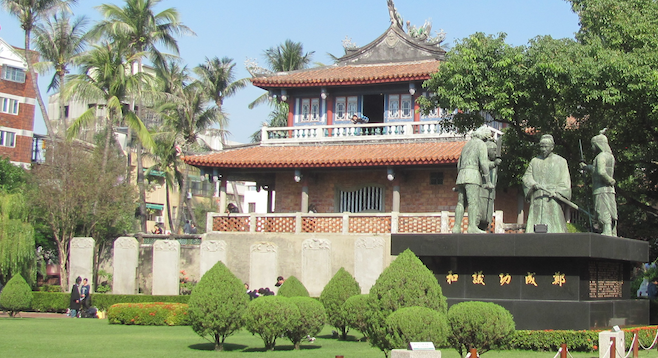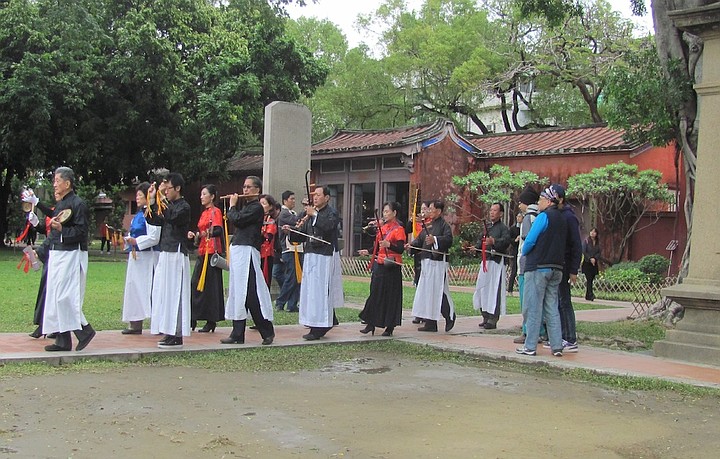 Facebook
Facebook
 X
X
 Instagram
Instagram
 TikTok
TikTok
 Youtube
Youtube

Most travelers to Taiwan simply visit Taipei, its modern capital. Although filled with wonderful sights, Taipei has only been a city of significance since the Chinese Qing dynasty moved the provincial capital there in 1886. Taipei was later the Japanese colonial capital until becoming the capital of the independent nation of Taiwan.
In those parts of the country with deeper ties to Taiwanese history, locals associate Taipei with Japanese and mainland domination of Taiwan. These people look south for the heart of Taiwan.
Tainan City was established as a Dutch trading port in 1624, but was captured by the Ming Dynasty general Koxinga in 1662. From its founding until the move to Taipei in 1886, Tainan served as the capital of the province. For those who view Taiwan as an entity with a unique, diverging history from the mainland, Tainan – not Taipei – is their cultural capital.
Getting There
It takes about 90 minutes to reach Tainan from either Taipei or the Taoyuan (closest to the airport) station on Taiwan’s High Speed Rail (HSR) system. The HSR station is on the outskirts of Tainan, and it takes about 30 minutes to get into the center of town on a local train.
The Historic Center
Tainan’s old city is relatively compact, with all the major sights within a seven- to eight-block walk. In the southern part of the city center is the National Museum of Taiwanese Literature, hosted in the old Japanese colonial-era Tainan District hall.

Just south of this is the Tainan Confucius Temple, built in 1665 and Taiwan’s oldest Confucius temple. Further to the south is Nanman (south gate), the best-preserved and most accessible of Tainan’s city gates.
To the northwest is the impressive Chihkan fort (top), built in 1653 by the Dutch as Fort Provintia. Within a few blocks of the fort are two of Tainan’s busiest temples, The Official War God Temple and Tian Tan (Altar of Heaven).
The Official War God temple sits opposite Chihkan fort and commemorates the Han Dynasty general Kuan Kung. A little further to the east, Tiantan Temple is one of Tainan’s most active and oldest Taoist temples.
Anping

The Anping district is the original Dutch port city, and it has many of Tainan’s greatest sights. First and foremost is Anping Fort (left), known to the Dutch as Fort Zeelandia. The fort was built in 1624. Today it's been converted into a museum that outlines the Dutch colonial period in Taiwan.
A few blocks north is the Tait Merchant House, another museum dealing with the Dutch colonial period. Behind the Merchant House is the Anping Tree House. This is the old warehouse of the Tait Company now overgrown with banyan trees.
However, the real action in Anping starts when the sun goes down. The Anping night market is Tainan’s largest market and its most lively. Streets are packed with locals and tourist alike, and the air is filled with the smells of hundreds of street vendors selling snacks including the pungent Taiwanese delicacy, stinky tofu. Make sure you try the local specialty, coffin toast.
The Bottom Line
Any first visit to Taiwan shouldn't skip the main sights of the capital, Taipei. No visit to Taiwan is complete without visiting the National Palace Museum and the Taipei 101 building.
But if you have time to dive a little deeper, or are on a return trip to the country and want a feel for pre-nationalist Taiwan, head south to Tainan to experience an authentic, indigenous Taiwanese history and culture.


Most travelers to Taiwan simply visit Taipei, its modern capital. Although filled with wonderful sights, Taipei has only been a city of significance since the Chinese Qing dynasty moved the provincial capital there in 1886. Taipei was later the Japanese colonial capital until becoming the capital of the independent nation of Taiwan.
In those parts of the country with deeper ties to Taiwanese history, locals associate Taipei with Japanese and mainland domination of Taiwan. These people look south for the heart of Taiwan.
Tainan City was established as a Dutch trading port in 1624, but was captured by the Ming Dynasty general Koxinga in 1662. From its founding until the move to Taipei in 1886, Tainan served as the capital of the province. For those who view Taiwan as an entity with a unique, diverging history from the mainland, Tainan – not Taipei – is their cultural capital.
Getting There
It takes about 90 minutes to reach Tainan from either Taipei or the Taoyuan (closest to the airport) station on Taiwan’s High Speed Rail (HSR) system. The HSR station is on the outskirts of Tainan, and it takes about 30 minutes to get into the center of town on a local train.
The Historic Center
Tainan’s old city is relatively compact, with all the major sights within a seven- to eight-block walk. In the southern part of the city center is the National Museum of Taiwanese Literature, hosted in the old Japanese colonial-era Tainan District hall.

Just south of this is the Tainan Confucius Temple, built in 1665 and Taiwan’s oldest Confucius temple. Further to the south is Nanman (south gate), the best-preserved and most accessible of Tainan’s city gates.
To the northwest is the impressive Chihkan fort (top), built in 1653 by the Dutch as Fort Provintia. Within a few blocks of the fort are two of Tainan’s busiest temples, The Official War God Temple and Tian Tan (Altar of Heaven).
The Official War God temple sits opposite Chihkan fort and commemorates the Han Dynasty general Kuan Kung. A little further to the east, Tiantan Temple is one of Tainan’s most active and oldest Taoist temples.
Anping

The Anping district is the original Dutch port city, and it has many of Tainan’s greatest sights. First and foremost is Anping Fort (left), known to the Dutch as Fort Zeelandia. The fort was built in 1624. Today it's been converted into a museum that outlines the Dutch colonial period in Taiwan.
A few blocks north is the Tait Merchant House, another museum dealing with the Dutch colonial period. Behind the Merchant House is the Anping Tree House. This is the old warehouse of the Tait Company now overgrown with banyan trees.
However, the real action in Anping starts when the sun goes down. The Anping night market is Tainan’s largest market and its most lively. Streets are packed with locals and tourist alike, and the air is filled with the smells of hundreds of street vendors selling snacks including the pungent Taiwanese delicacy, stinky tofu. Make sure you try the local specialty, coffin toast.
The Bottom Line
Any first visit to Taiwan shouldn't skip the main sights of the capital, Taipei. No visit to Taiwan is complete without visiting the National Palace Museum and the Taipei 101 building.
But if you have time to dive a little deeper, or are on a return trip to the country and want a feel for pre-nationalist Taiwan, head south to Tainan to experience an authentic, indigenous Taiwanese history and culture.
Comments